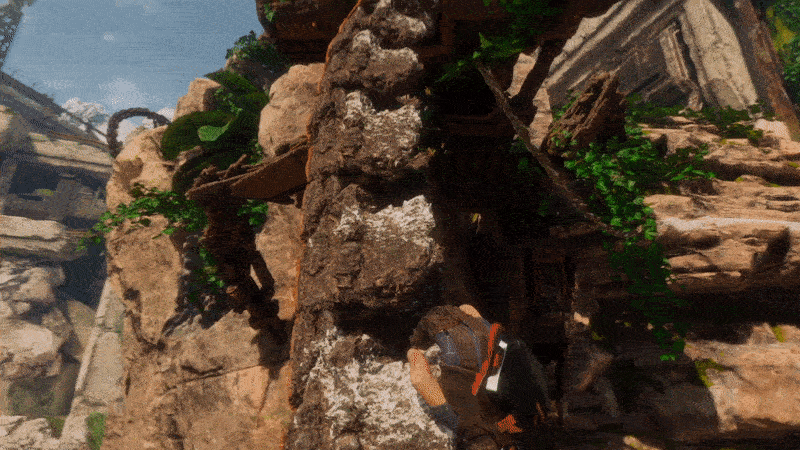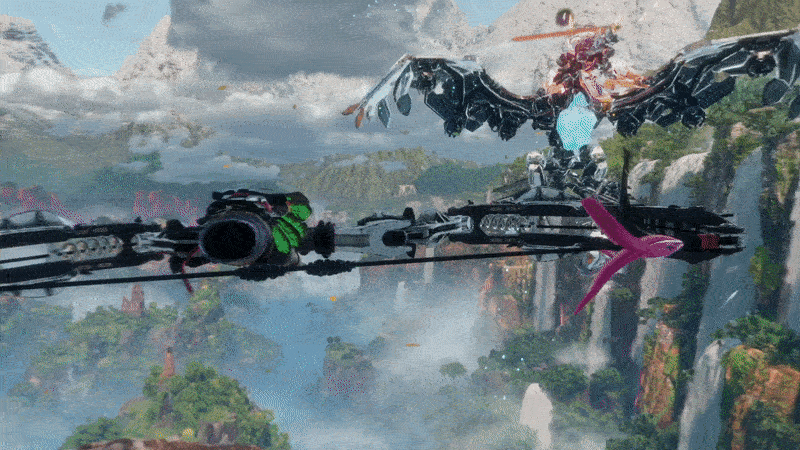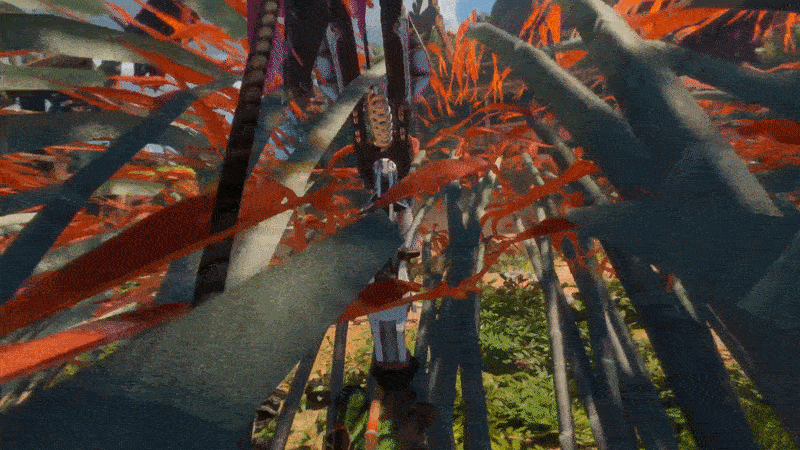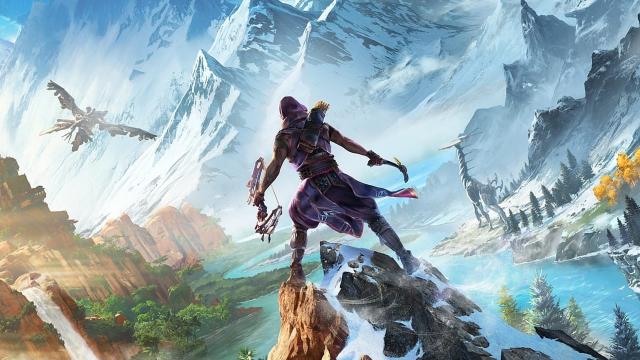A fully realised VR experience in the world of Sony’s Horizon franchise is an exciting prospect indeed, but Horizon Call of the Mountain can’t fully deliver on that promise. It’s too small in scope, has a surplus of arcadey combat scenarios that instantly break immersion with their rigid structure, and what strengths it has only hint at the potential of a freer, more unshackled experience. There’s definitely some fun to find here, and it’s a good PlayStation VR2 demonstration, but Call of the Mountain misses the mark in a few disappointing ways.
Editor’s note: This is the Kotaku US review of Horizon: Call of the Mountain. Kotaku AU will have its own coverage for you once we have our PSVR 2 review unit in hand. Appreciate your patience. — David.
As a launch title for the $880 PS VR2, Horizon Call of the Mountain has two challenges: proving itself as a spin-off game, and as a reason to spend a good chunk of change on fancy new hardware. It takes place 1,000 years into the future, after reckless technological advancement leaves our world is in rusted ruins. You play as Ryas, an expert climber and archer, who gets tasked with setting out to learn more about an advancing threat. The game oscillates between combat with robotic dinosaurs and climbing challenges similar to those in Uncharted or recent Tomb Raider games.
Note: This article primarily focuses on Horizon Call of the Mountain. For more in-depth impressions of Sony’s new hardware, see Kotaku US’ full PS VR2 review.
Is PS VR2 worth it just for Horizon?
So should you spend nearly $1000 just to play Horizon Call of the Mountain? Almost certainly not. It’s not an awful game by any means, and perhaps worth grabbing if you aspire to be a PS VR2 completionist or are new to VR. But Horizon’s VR debut suffers from unshakeable feelings of rigidity and linearity. It also feels like it could’ve done more with its main gameplay element. Climbing scenarios make up the bulk of the game’s experience, and get more interesting as it goes on, but stop shy of ever really feeling clever or intriguing.
In some ways I felt like I was playing Uncharted more than Horizon, and I mean that in a good way. The climbing definitely drew me into the world, and the increased rendering capabilities of the PS VR2 made the cliff walls, ropes, and handholds pop with life. If you’ve never played a VR game before, this part will be a treat. And if you are a VR vet, you might be impressed with the fidelity on display. If you’ve ever played an Uncharted game and wondered what it might be like to actually see and experience the climbing in first person, this game does a good job of delivering that (though it rarely feels as perilous).
Many times the illusion was fully convincing; one particular moment was a bit too real. Early on, some snapmaws, big robo-dino-crocodiles, attack your boat, plunging you underwater with these large beasts swimming around you. As someone with a phobia of such situations, I reflexively pulled off the headset. I tried again and got nauseous — not because of motion sickness, but rather my brain, terrified of being helpless in water, could not sufficiently differentiate this experience from reality. So yeah, this game certainly is immersive. (I got through it by taking off the headphones, and barely squinting with one eye as I swam my character to safety.)

During climbs, I often felt like I was actually climbing real surfaces. This is thanks to the combined forces of excellent texture and model design and the improved technology of the PS VR2 headset itself. I’d get to the top of a climbing section, look down at the wilds below, and feel a flash of “whoa, I just climbed this thing!”. It’s very cool; I just wish there was more climbing, and of a kind that let me explore and stretch my arms a bit, giving me opportunity for trial and error and rewards for straying from the intended path.
I don’t think Call of the Mountain should’ve aspired to ape the main Horizon games’ open-world structure, but I wish it let me feel like I was “exploring” more often. Some of my favourite climbs gently nudged me to be a little creative with pathing, such as several that let you wield a pair of pickaxes à la the recent Tomb Raider games. But Call of the Mountain really wants you to go down set paths, in a way that’s a bit too obvious. And even when I start to get a flow going I get locked into rigid combat sequences or met with frustratingly repetitive tutorials that. just. won’t. leave. me. alone.
Call of the Mountain’s combat is tiring
Speaking of combat, it’s not good, always feeling like an unnecessary burden. While I think the climbing can be a little too on-rails yet still worth it, I find very little of value in fighting Horizon’s mechanical dinosaurs in VR. In fact, I think this combat should’ve been left on the cutting room floor so that there could’ve been more focus on climbing.
In Call of the Mountain, when fighting any of the game’s now-iconic robo dinos, you’re locked into a small battle space where you warp in a circle-strafe pattern around your enemies, moving in broad sweeps when dodging, and using fine movement to pick up health or ammo. (Fights against flying enemies typically have less dodge-room, and have more of a shooting range feel.) There’s a pattern of dodge, scan for weak points (similar in practice to the Zero Dawn or Forbidden West), fire an arrow at the appropriate area, with the ability to stagger if you trigger enough of the right elemental damage, dodge, rinse and repeat.
And you’ll be doing a lot of the repeating. Combat encounters are longer than they should be, plus your only weapon really is the bow and arrow — which is not true of full-fledged Horizon games. Crafted arrows always seem to run out too quickly (everything but the base arrow requires crafting, a simple two- or three-step process of fastening the fletching, arrow tip, and a special component).
And you’ll be doing a lot of the repeating. Combat encounters are longer than they should be, plus your only weapon really is the bow and arrow — which is not true of full-fledged Horizon games. Crafted arrows always seem to run out too quickly (everything but the base arrow requires crafting, a simple two- or three-step process of fastening the fletching, arrow tip, and a special component).

But the real failure of Call of the Mountain’s combat is that it doesn’t offer you the fantasy of inhabiting its world.
Take Half-Life: Alyx as an example (c’mon, you knew I was gonna bring this up). While Alyx feels a little “smaller” than the various Half-Life 2 adventures that came before, it faithfully brings you into the theatre of Half-Life. The VR elements serve to allow more freedom, as the game’s tracking your body’s physical movement. It’s still a first-person shooter, only now you enjoy more mobility, moments of improvisation, and real-life adjacent tests of marksmanship.
In Alyx I’ve physically dropped to the ground to go into cover, cautiously peered my head around the virtual corner, and fired off shots before racing to the next cover, hoping I could angle a grenade toward a Combine soldier en route. My immersion has been such that I’ve even emptied magazines into the bodies of particularly frustrating foes, just to satisfyingly get it out of my system. Alyx offers a heightened version of the Half-Life fantasy, and it’s awesome for that. In comparison, Call of the Mountain is just an arcade shooting gallery featuring the beasties you know from the games where you actually want to fight them. You almost expect a carnival attendant to bark that he needs another five bucks before you can fire another shot.
Read More: PS VR2: The Kotaku Review
An early experience I had in Call of the Mountain demonstrates how frustrating the combat can be. After sliding down a steep incline, I found myself in familiar territory: surrounded by shoulder-high red grass. Just 10 or so feet ahead was the robotic creature I was hunting. It hadn’t caught sight of me yet. I knelt down below the grass, felt the world shrink around me to indicate I was out of sight, pulled out my bow, and began crafting a fire arrow.
I was immersed: Here I was, a hunter 1,000 years from now in a new civilisation, needing to rely on my wits to overcome creatures whose strength I could never hope to match. It was all about timing, caution, and preparation. I placed the flammable material at the end of my arrow, fixed the fletching and arrow tip into place, then slowly rose ‘til I could just poke my head above the grass. I saw an opening, I snapped to full standing position, drew my arrow arm back, released, aaaaaand the game did a quick fade to black during which it warped me into a mandated battle zone with two of these things jumping around. Hopefully PS VR2’s advanced eye tracking picked up how hard I rolled my eyes as I let out a deep sigh of disappointment. I’d been having fun for a moment, god damn it.

If you’ve played any Horizon games, then you know the combat can get a little wild and hectic, so much so that a direct copy in a VR environment might be more nausea-inducing than anything else. But in trying to make the experience not a total vomit trip in VR, Call of the Mountain makes too many sacrifices. I deeply want the experience of needing to navigate a combat space with these creatures in a way that feels alive and unpredictable — like it does in the main games. I’d have loved a broader choice of weapons to use, with opportunities for stealth and cover. This is likely to be an ok experience as an extended tutorial for VR newbies, but the thrill I get from playing Half-Life: Alyx or Boneworks is nowhere to be found in the combat of Call of the Mountain, and it’s a shame.
Call of the Mountain is only for PS5 VR newcomers and completionists
Horizon has a killer setting, and in some ways Call of the Mountain manages to bring it to life. At various points, particularly during long climbing sequences, the impressive tech of the PS VR2 let me feel like I was actually in this world. But when the action starts it feels too rigid and too scripted, which is the opposite of what I seek in VR. It is not simulating the reality of this world, it’s just feeding you little vignettes with cutting-edge tech. Call of the Mountain has some fun sequences, and it’s definitely worth trying if you get the chance, but it’s hard not to feel disappointed by all its untapped potential.

Leave a Reply